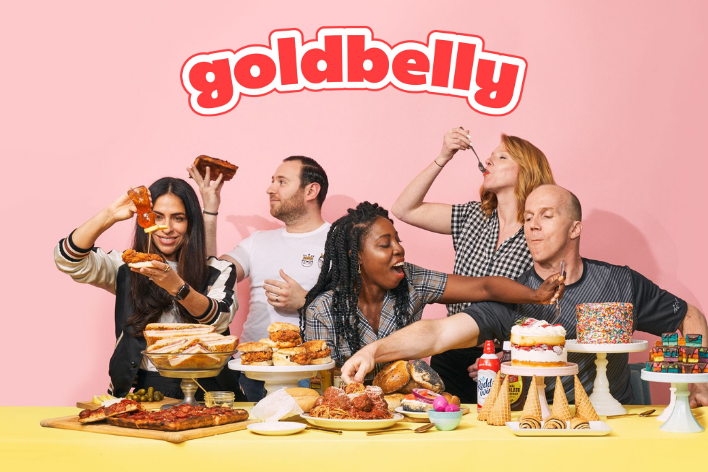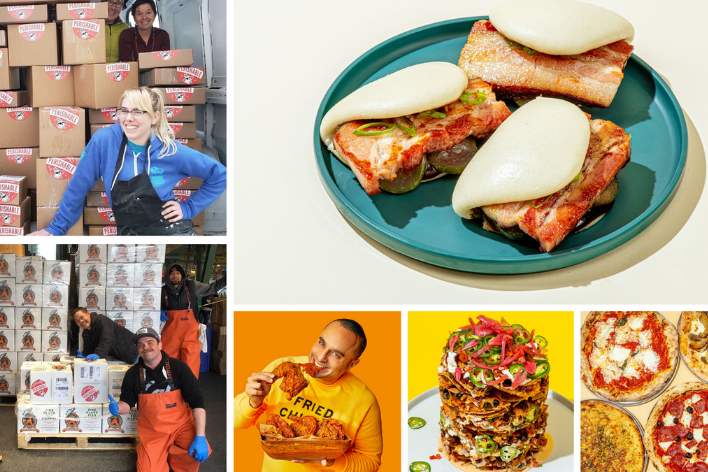
perspectives
Goldbelly: E-Commerce for America’s Greatest Food Experiences


Food: The Frontier for E-Commerce
Jeff Bezos’s decision to sell books online may seem intuitive in hindsight – they’re storable, shippable, and easily describable in an online listing – but Bezos seemed to appreciate that books as a category are unique in some significant ways. Specifically, the sheer number and variety of books and authors make the category nearly universal in its relevance and appeal. Additionally, great books and authors define cultures, create experiences for readers, and connect with people in deeply personal ways. With books, Bezos saw an opportunity to offer products that would resonate with nearly everyone and thereby demonstrate his vision for how the internet would free commerce and consumption from the constraints of local proximity. E-commerce would mean even small, local businesses that made great products – not just the ones with the best locations – could address nationwide demand. E-commerce would also mean consumers could access far more than just generic products or the best ones nearby; they could have the best products from anywhere and discover the ones that truly appealed to them.
Since then, e-commerce has transformed nearly every product category. We now shop online for the small and simple things – think toys, groceries, cosmetics, and office supplies – as well as the big and bulky – think furniture, appliances, and even cars. Many believed those categories would not all move online or be shipped nationally – after all, commodity products were available at the local store, people would need to see or feel others before buying them, or the items seemed too difficult to ship – but each has supported a growing number of highly successful e-commerce businesses around the world. And yet, one category – which turns out to be quite book-like in its universal appeal, cultural and personal significance, and readiness for nationwide e-commerce – has yet to be similarly reimagined: food.
E-Commerce: The Frontier for Food
Internet and software businesses have driven sequential waves of change for restaurants, food makers, and consumers over many years. OpenTable digitized reservations; Yelp and Google created online listings and reviews; Seamless and GrubHub pioneered online ordering and delivery in major metropolitan areas; DoorDash and Uber built platforms and labor models that made local delivery possible in new categories and geographies; Toast and Olo are modernizing restaurant payments and operations. Amidst all that change, restaurants have remained a strictly local business.
This doesn’t have to be the case, but it’s not a surprising reality. For most food makers, the paths to build national reach and fulfillment have been largely unattainable or unappealing. Such expansion has required large amounts of capital, multi-channel marketing at scale, and a great deal of supply chain and franchising overhead. More realistically, food makers could aspire to open a few locations that operate locally in multiple major markets, possibly partner with a hotel or two, or go the grocery store route and license their brand for frozen food distribution. For any who tried to generate and service non-local demand, e-commerce has generally been just as complex and prohibitively expensive; even when perishability and presentation could be solved with packaging, list prices for next-day or two-day service for any individual low-volume shipper meant e-commerce sales typically weren’t viable.
Simultaneously, we as consumers can all identify foods we grew up eating with family, restaurants we frequented in college with friends, dishes we ate on that vacation, or desserts we indulged in to celebrate. Consciously or not, we don’t just eat those foods. We experience them. Those foods are different for everyone, and they’re created by acclaimed chefs and local artisans alike, but they share something powerful in common: they evoke cultures, memories, and feelings that we want to experience and share with others, so much so that we go out of our way to tell stories about them, build traditions and rituals around them, and even make cross-country pilgrimages to taste them again or for the first time.
Goldbelly, the platform for delivering these types of food experiences from across the country right to your door, regardless of where you live, is changing all of this for merchants and consumers alike.
From Nashville Nostalgia to Cross-Country Cravings
While living in New York in 2013, Goldbelly co-founder and CEO Joe Ariel had an unsatisfiable craving for the hot chicken he used to eat while going to school in Nashville. Recognizing everyone has their own version of that nostalgia, and that millions of people who would love Nashville hot chicken – or any number of other iconic foods – just hadn’t experienced or heard of it, he set out on a mission to empower legendary food makers to reach nationwide audiences and to connect consumers with their greatest food memories, experiences, and desires.

Since then, merchants across the country have fallen in love with Goldbelly and the way it expands their brands and businesses. Goldbelly’s marketplace drives nationwide online demand at a scale and across channels in a way no individual merchant could on their own, and it offers all the technology tools and expert advice merchants need to merchandise their Goldbelly storefront and fulfill e-commerce orders, often utilizing off-peak hours in their kitchens or stores. With its scale and volumes, Goldbelly also makes it possible for merchants to offer overnight and two-day shipping on dishes or meal kits that are carefully packaged for consumers to finish preparing and enjoy in their own homes.
When we spoke with merchants about Goldbelly, the impact it has had on the industry and their business was clear and powerful. One said, “They have literally made my dream come true. With Goldbelly, I make pies at night, and people all over the country eat those pies the next day.” Another described his experience saying, “Within months, Goldbelly added the equivalent of multiple stores of revenue to our business. I see where these orders are coming from, the gift notes attached to some of their orders, and I truly can’t believe it’s happening. Some of our biggest fans don’t even live here, and now I’ve found them.” Yet another talked about the business his family has owned for decades: “I was skeptical, but I saw Goldbelly working well for some of their other merchants, and I know those guys care about quality and freshness like we do, so I tried it. Now it’s the future of our family’s shop. We’ll always have our flagship store, but Goldbelly is our future.”
For consumers, Goldbelly makes it possible to revisit old favorites, discover new flavors, and share incredible dishes with friends and loved ones who they know will connect with those deeply personal, cultural, and experiential parts of great food. Goldbelly has become the marketplace to explore America’s best foods and makers – the ones that define their categories – and local legends that embody regional flavors like Michigan cherry pie, Kansas City ribs, Maine lobster rolls, Detroit-style pizza, New York bagels, Seattle’s finest seafood and more. People are passionate about great food and the culture and moments that it represents, and that is reflected in the social media groundswell we see as people share about their Goldbelly experiences online. It is evident in the way consumers return time and again to order something special for date nights, family celebrations, hosting parties, reunions with friends, and gifts for their colleagues and loved ones – all because they recognize that memorable food creates experiences and connects people like nothing else can. Lockdowns across the country over the last year certainly put e-commerce tailwinds in Goldbelly’s sails, and they also highlighted for consumers just how deeply attached we all are to the types of food experiences that suddenly became out of reach. Goldbelly makes those experiences available for everyone, everywhere, all the time. After years of incredibly hard work, Joe’s vision is coming to fruition: millions of consumers have now tasted the future of food e-commerce, and they love it.
Helping Goldbelly Define Experiential Food Commerce
We are thrilled to partner with Joe, his cofounders Vanessa Torrivilla, Trevor Stow, and Joel Gillman, and the rest of the team at Goldbelly. The business exhibits many of the hallmark characteristics and themes we look for in new investments: thoughtful founders and teams who are deep in their domains, passionate customers, brand strength, and a multi-sided value proposition that reinforces category leadership with scale. Goldbelly builds on our experiences partnering with other founders who have successfully scaled national or global marketplace and e-commerce enablement businesses including GrubHub, The Knot WorldWide, Teachers Pay Teachers, and B-Stock. Furthermore, it sits at the nexus of our other work and perspectives on food and consumer delivery experiences through Datassential and DispatchTrack, respectively. Lastly, as Goldbelly builds on its brand and expands its product offerings, we’ll help apply strategies we have seen work well across successful consumer content businesses such as Headspace, Ancestry, Lynda.com, Scribd, and AllTrails.
As we join Joe on this journey and work to ensure Goldbelly has the resources, talent, and capabilities it needs to achieve its full potential, we share his vision of a future in which food makers everywhere can reach their passionate fans all over the map – not just through traditional and social media channels, but also with their foods, in their homes. We envision people everywhere exploring and experiencing the best foods from the best food makers – not only in local shops and restaurants, but right in their own kitchens – all because Goldbelly makes it possible have those moments, cultures, memories, and dreams delivered to their door.
If you’d like to learn more about Goldbelly, read the press release on the $100 million growth investment led by Spectrum Equity and The New York Times' feature story on co-founder & CEO Joe Ariel and the company's extraordinary growth.